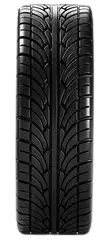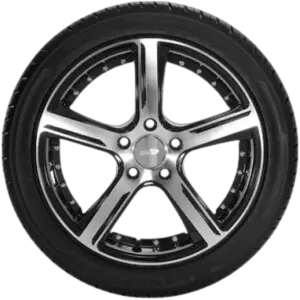
Width
Dia.

Width
Dia.



Circ.
Rim
Wall
Revs/Mile



Circ.
Rim
Wall
Revs/Mile
| / | R |

| / | R |
| Parameter | 235/35 R18 | 205/40 R18 | Differ. |
|---|---|---|---|
| Tire Height | |||
| Section Width | |||
| Circumference | |||
| Sidewall Height | |||
| Revolutions | |||
| Rim Size |
Tire Size 205/50 R15 vs 215/50 R15
Both have their own benefits and drawbacks, so it can be hard to decide which one is right for you. We will compare the two sizes and help you decide which one is best for your needs! Overall Diameter
The overall diameter helps you understand the tire's height, which is vital for things like speed bumps and potholes.The tire diameter of the 205/50 R15 tire size is 0 inches and the 215/50 R15 tire size is 0 inches.
Section Width
Section width is another important number to consider when choosing a tire size. It is the width of the tire from sidewall to sidewall.The section width of 205/50 R15 tires is 0 inches and the section width of 215/50 R15 tires is 0 inches.
Circumference
The circumference of the tire is the distance around the tire. It is essential because it can affect the speedometer readings in your car.The circumference of 205/50 R15< tires is 0 inches and the 215/50 R15 circumference of tires is 0 inches.
Sidewall Height
Sidewall Height The sidewall height of a tire is the distance from the edge of the wheel to the top of the tread.The sidewall height of 205/50 R15 tires is 0 inches and the sidewall height 215/50 R15 tires is 0 inches.
Revolutions Per Mile
The Revs per mile of the 205/50 R15 tire size is per mile, whereas the 215/50 R15 tire has a diameter of per mile.Wheel Size
Rim diameter is the final number to consider when choosing a tire size. This is the diameter of the wheel that the tire will be mounted on.The wheel size of 205/50 R15 tires is 0 inches and the wheel size of 215/50 R15 tires is also 0 inches.
Construction Type
The last thing to consider is the construction type. The construction type of a tire is the way the layers of the tire are put together.The construction type of 205/50 R15 tires is radial and the construction type of 215/50 R15 tires is also radial tire construction type.


Iam using Honda WRV, it comes up with 195 60 R16, I want to upgrade please suggest which one is good for this car
205 60 R16 or 215 55 R16
For improved grip, maintained comfort, and minimized changes to vehicle dynamics, the 205/60 R16 would likely be the better choice.
I have a 2013 Acura MDX. The recommended tires size is 255/55/R18. Last summer I bought new tires in Michigan . I did not request any specific size but I assumed the appropriate tires would be mounted. I just took the car to my California mechanic to get ready to go back to Michigan. He informed me that the tires that were mounted are 225/55/R18. I was not informed that 225 tires were installed. Those tires now have 6K+ miles. According to your comparison as well as others I have seen the 225 tires are significantly smaller that the 255 with differences in wear, handling and ride. While your analysis references “benefits and drawbacks” between the two sizes, other sites say the smaller tires are dangerous for a vehicle the size of the MDX.
My plan is to go back to the dealer and demand that they replace the tires with appropriate size tires. Since you now know the size of the vehicle that the tires are on I would be interested in getting your view about benefits and drawbacks. Am I right to be concerned about the tire size?
The difference in overall diameter between your original tire size (255/55/R18) and the tires currently mounted (225/55/R18) is approximately 4.7%. This variance exceeds the generally recommended maximum discrepancy of 3% in tire size alterations.
It’s advisable to consider replacing your tires with ones that match the original specifications as soon as feasible. Using tires of an incorrect size can lead to several drawbacks, including diminished grip and handling capabilities.
This can adversely affect your vehicle’s performance, particularly under challenging weather conditions. Ensuring that your tires conform to the manufacturer’s recommendations is crucial for maintaining optimal safety and performance.